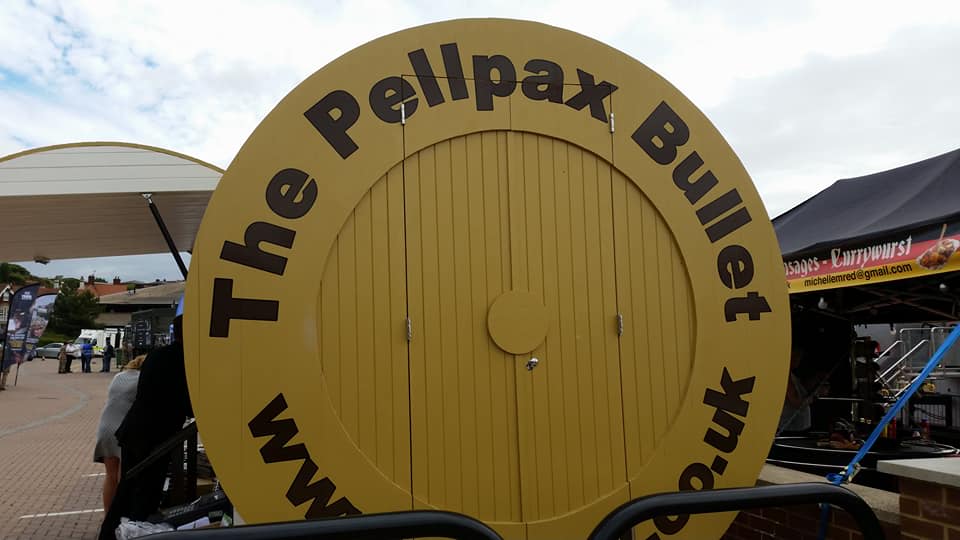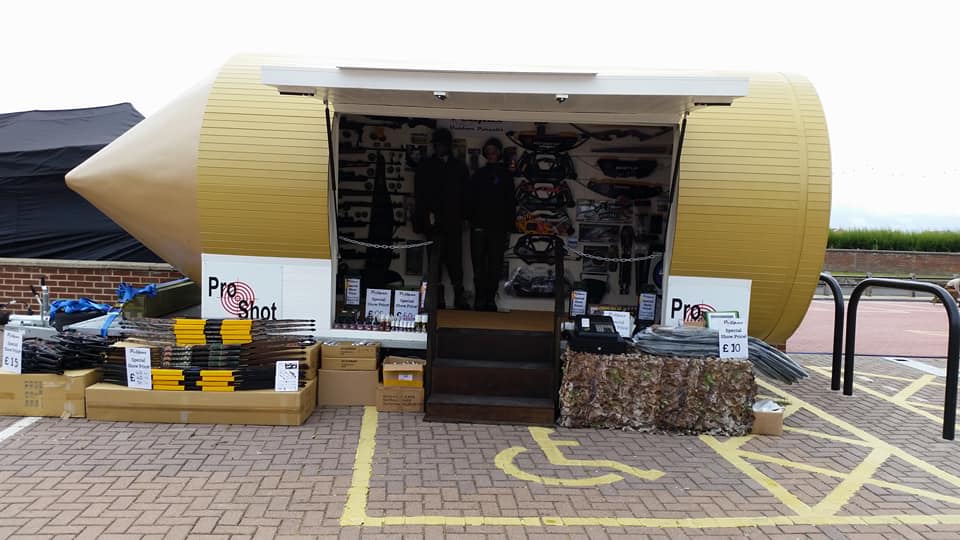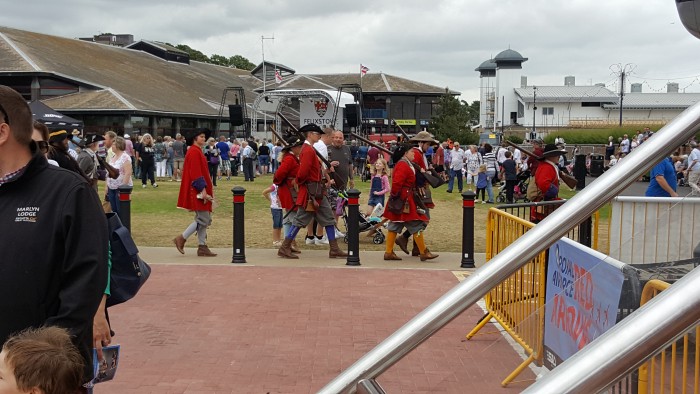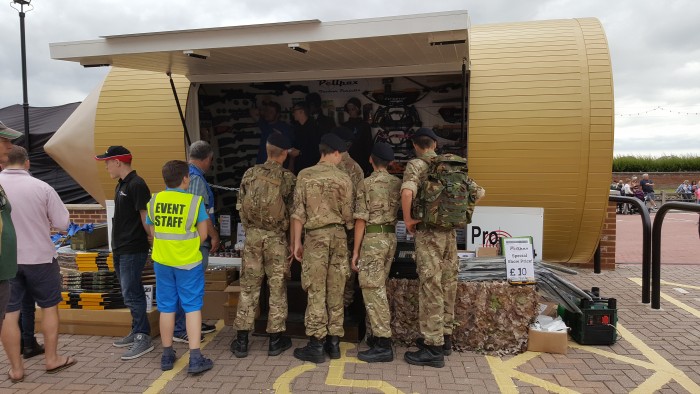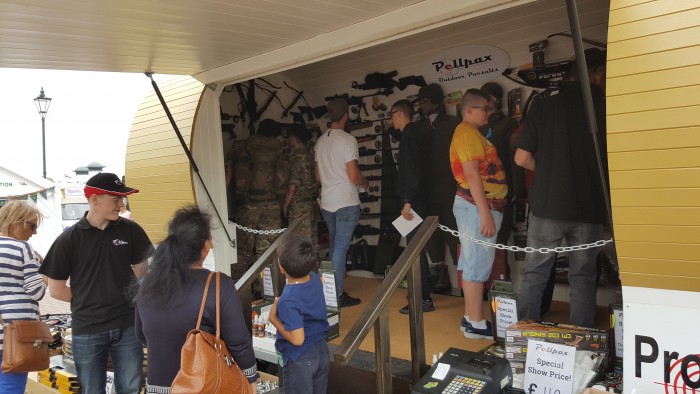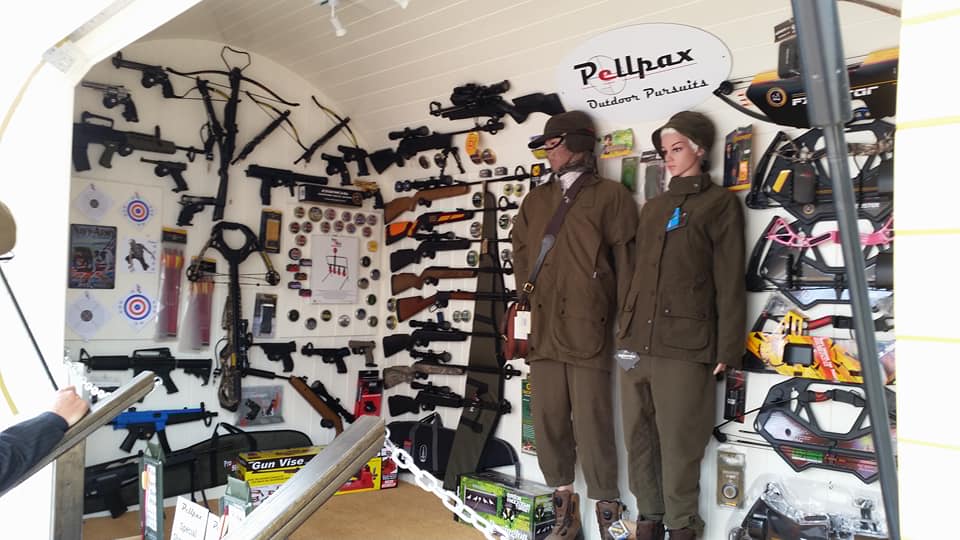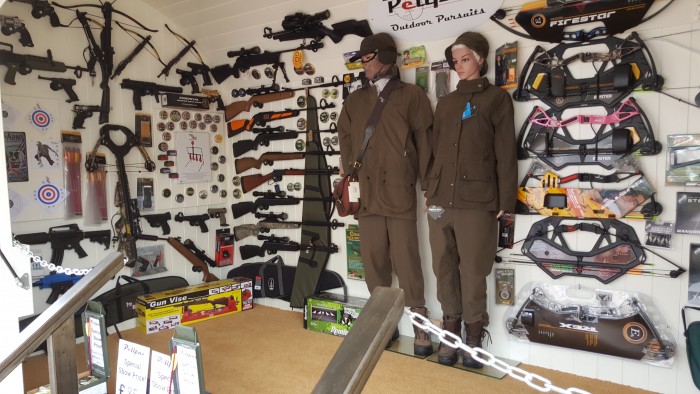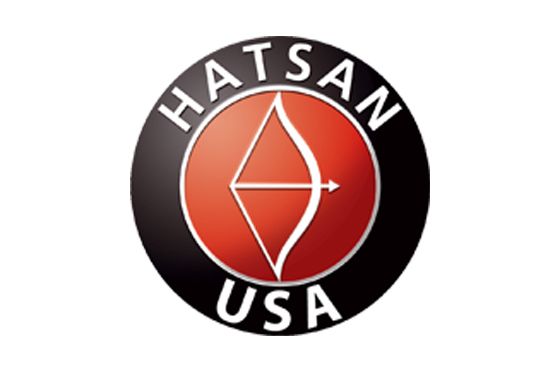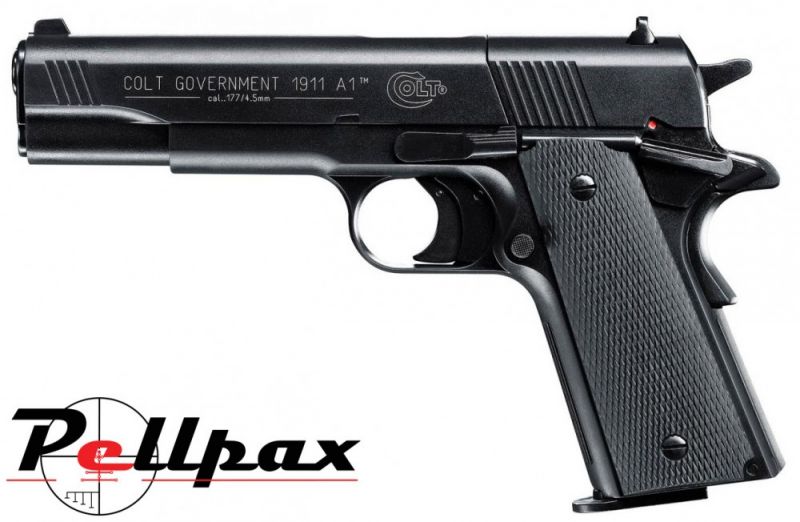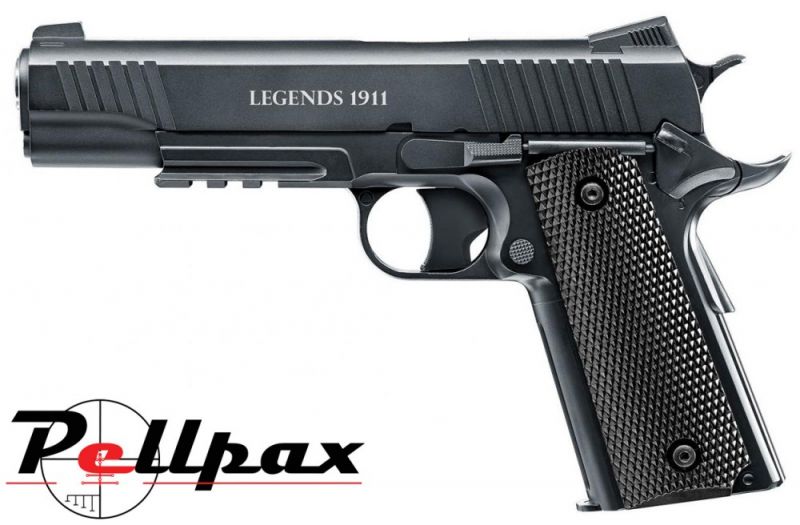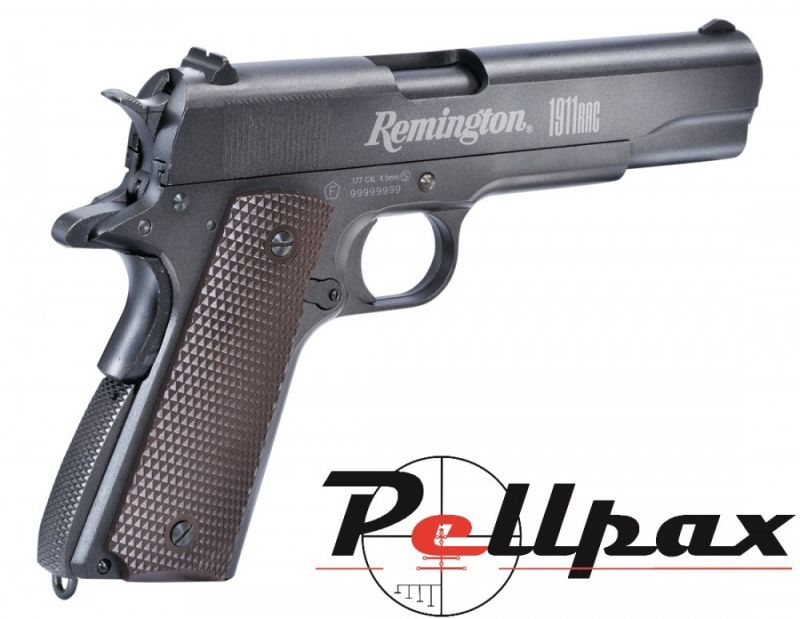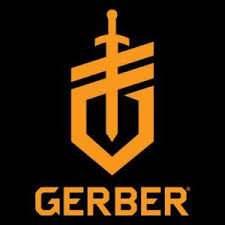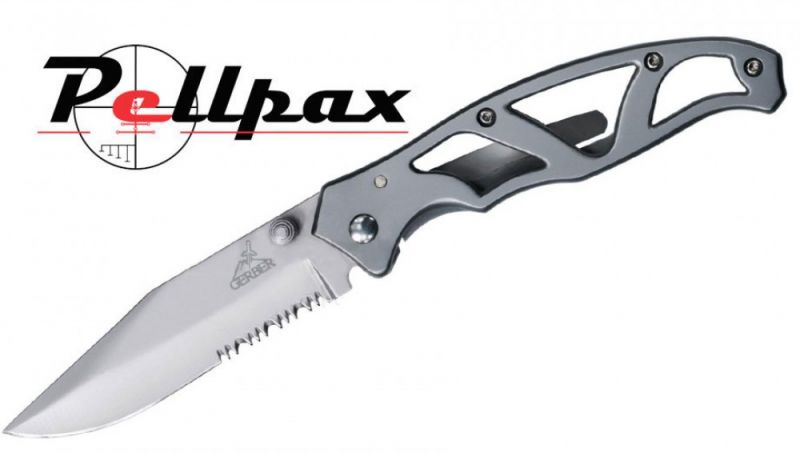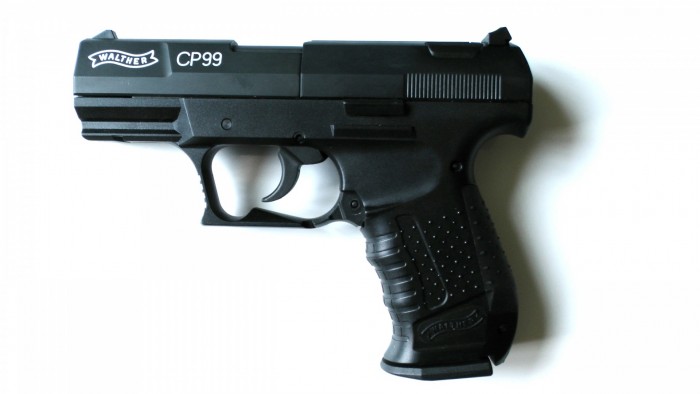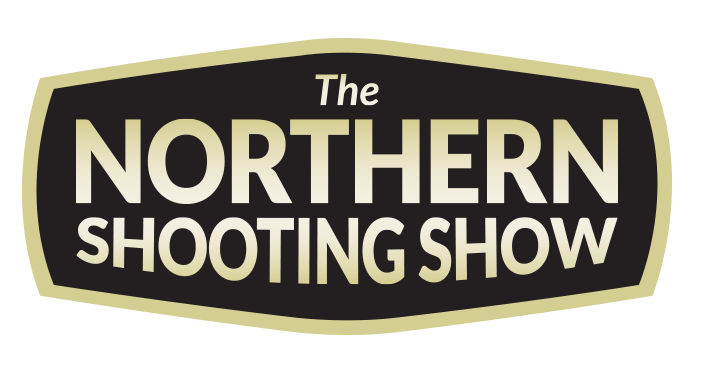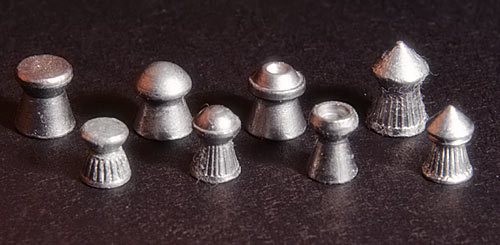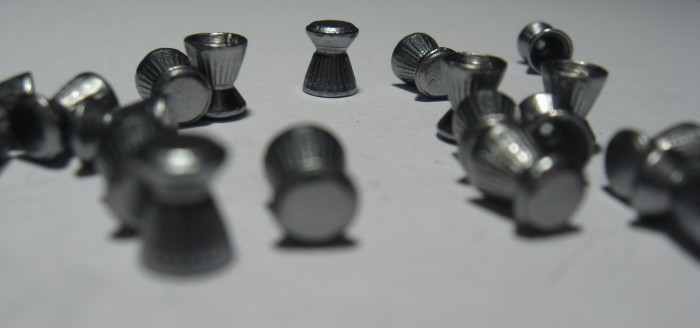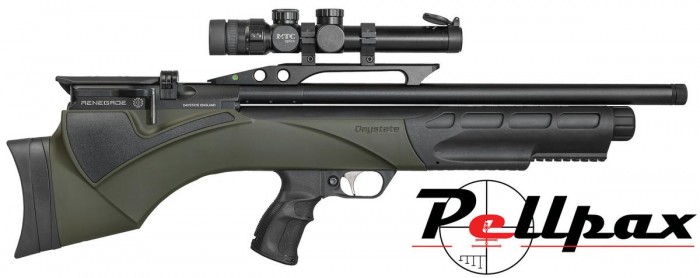
This month, Steph Brooks takes a closer look at the FX Wildcat, to see how it matches up against the Daystate Renegade.
Today in the face-off, we’re testing the FX Wildcat and the Daystate Renegade, which total nearly £2,500 worth of airgun. It makes a nice change from testing cheap CO2 pistols, but I do feel some pressure to help you make the right choice. Not many people, especially in today’s climate, have the money to spend a thousand pounds on the wrong rifle, so with that in mind, let’s continue.
Origins
Both of the rifles have somewhat similar beginnings, with the Renegade being created from the Pulsar, while the Wildcat’s design has its origin in the FX Bobcat. The Renegade differs from the Pulsar in that it features a mechanical action instead of the computer-controlled solenoid of its older brother. This means the Renegade houses a hammer that is cocked and then latched onto a sear, similar to a traditional rifle, although it does retain the electronic “mouse click” trigger of the Pulsar.
However, it’s worth noting that where the pressure gauge is located on the Renegade, there’s a circular Daystate logo on the Pulsar. This makes me think that Daystate had always planned to release the Renegade, and perhaps it was even designed alongside the Pulsar. This suggests that there’s a demand out there from people who like their rifles more conventional than computerised.
The Wildcat, from FX, has a more defined origin, being spawned from the FX Bobcat when people were asking for a smaller, more consistent version of the rifle. The resulting Wildcat, as well as the Bobcat MK II, released around the same time, are almost completely different guns, with the Wildcat in particular having an all-new cocking system and completely redesigned stock, as well as many other components. This has led to the Wildcat sitting alongside the Impact as one of FX’s most popular models.
First Impressions
The Renegade looks like a Pulsar. In fact, the design is so close you would be forgiven for thinking they were one and the same. There are some subtle differences, such as the lack of the LCD screen and the added pressure gauge near the pistol grip, but essentially, if you like the unique styling of the Pulsar, you’ll like the Renegade. It does, however, lack the inbuilt laser of the Pulsar, which is a little disappointing.
The Renegade comes in a greenish synthetic stock, although that can be switched for any of the Pulsar’s stock options, as they’re made to order and are essentially the same shape. The rifle is nice and compact, if a little heavy, but I have always thought the pistol grip looks somewhat odd with these bullpups. It just kind of sticks out with no connection to the stock. But hey, looks are subjective, and I have colleagues who tell me they love the design.
Perhaps it would have been nice to have something to differentiate it from the Pulsar, but I suppose that defeats the object of what the Renegade is supposed to be.
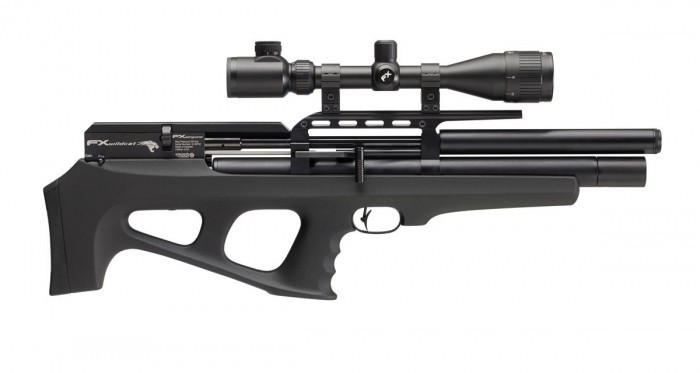
No such problem with the FX, as it looks significantly different from its originator, with a minimal skeleton stock design that’s available in black soft touch, walnut, or grey laminate. We tested the black model here, and, despite my unhealthy love for a deeply stained piece of walnut, I have to say the feel here is absolutely exceptional. The soft touch stock is easily gripped, and almost velvety to the touch. The rifle is around half a kilo lighter than the Renegade, despite being considerably longer. This leads to great balance between the hands, and this is something to consider, especially for hunters who are likely to carry their rifle around and shoot without a rest.
The thumbhole is large, without looking oversized (I’m looking at you Brocock Bantam), and the whole rifle strikes a great balance between modern and classic designs. The Wildcat loses to the Renegade, though, with its lack of weaver rail, meaning any accessories, other than a scope, are going to be a struggle. Also, although neither rifle is fitted with swivel studs, I would be much more comfortable drilling into the Renegade, as its stock is rubber over wood, as opposed to synthetic, which has a habit of splitting. I have to say I didn’t try drilling either, so this is really just from personal experience.
Despite all of this, I think I’m giving the win to the Wildcat. It looks better, it feels better, and it’s much lighter than the Daystate. It’s also around £300 cheaper, which is not to be sniffed at. This seems insignificant, compared to the price of the gun, but that’s the cost of a good scope, about 50 tins of pellets, or the weekend away you have to buy your missus when she finds out you just spent a grand on a new rifle.
Winner : FX Wildcat
How it all works
So, as stated before, the Renegade is a more mechanical version of the Pulsar, but it has retained one electric feature. The trigger still fires a solenoid, but instead of hitting the valve, this just pulls down the sear, releasing a traditional hammer. This makes the trigger of the Renegade as light as a feather and is one of its key selling points.
The trigger on the Wildcat is fully mechanical, and, while it’s a good mechanical trigger with a particularly clear second stage, it doesn’t hold a candle to the crispness and lightness of the Daystate. Once in a while, an innovation comes along that completely changes the game, and if it wasn’t for the cost, I could see this trigger system installed on every mid-ranged and above rifle across the planet – it is that good.
The Renegade also wins out with its 10-round magazine, compared to the Wildcat’s 8. Eight seems unusual for a .177 PCP magazine, but the magazine is well made, with the pellets held securely in place by a pair of O rings. It’s worth stating that the Wildcat magazine is a big improvement over other FX models, like the Royale, where the first pellet has to be loaded backwards (just why?). Both indexed with no problems, with the Renegade being indexed pneumatically to prevent double loading – a nice touch that would be welcome on the FX, where double loading is a possibility.
Both use a sidelever cocking action, with the Wildcat’s in particular being very easy to operate. It seemed lighter and less clunky than the Daystate, which needed a firmer grip to move, as opposed to the fingertip lightness of the Wildcat.
The safety of the Wildcat is manual, which is my preferred choice anyway, and, as with all parts of this rifle, it’s easy to move with just your fingertips. The only quibble I have here is that maybe the safety is too easy to move; the groove in the stock that the switch sits in slopes towards the fire position, and I can see this potentially being moved by accident.
A little feature I really liked with the Renegade was its inbuilt spirit level. Now, the Renegade is quite a tall rifle, even for a bullpup, which means there’s a larger distance between the end of the scope and the end of the barrel. This can easily be adjusted for when shooting in a straight line, but it means that tilting the rifle, even slightly, can throw your accuracy off to a larger degree than shorter guns. Daystate thought of that with a spirit level located just under the scope. It’s in a great position too, allowing you a quick glance, when the rifle’s shouldered, without having to move your head.
The winner here is the Daystate. It has a lot of little touches that set it apart from the crowd. The FX is nice, with the sidelever action in particular being really light, but the exceptional mouse-click trigger on the Daystate is what finally tipped the balance for me.
Winner : Daystate Renegade
Down the Range
So once again I find myself down at our very own shooting range with nearly two and a half grand’s worth of air rifle to play with all day. I hope you all understand the troubles I go through to bring you such in-depth reviews. Both rifles are chambered in the .177 calibre and are set to sub 12 ft/lb levels, although there are other options available.
Filling the FX Wildcat is quick and easy and uses the quick fill push probe that pushes into a hole behind the pressure gauge, making filling with air quick and easy. The Renegade is filled by unscrewing a cap and screwing on a Forster fitting, a bit more time consuming, but nothing to write home about.
Tested using the .177 Daystate Kaiser pellet, the Renegade pulled in at 11.3 ft/lbs, whereas the FX was shooting slightly above that, with an average of 11.45. There was also very little deviation when it came to FPS, either with a 5 FPS deviation for the Daystate or 8 FPS for the Wildcat. Hmmmm … Maybe the best way to separate these rifles is hitting targets. I set up a 30-yard range and was comfortably hitting ½” groups with both.
Maybe the Renegade’s grouping was marginally tighter, but from my estimations, there is no real difference between them when it comes to accuracy. Maybe, if you were hunting, you’d take the Wildcat, as it packs a slightly larger punch. but not so much to be really that noticeable. I have also read reports on the Internet that the smooth twist barrel on the FX is useless and makes the gun inaccurate. Don’t believe them. The gun performs well at range and I would trust it for either rabbits or targets.
Both rifles also feature a well-shrouded barrel that reduces muzzle noise quite significantly. And there are specific silencers available for both, but it’s more for people who want less muzzle noise than need it, as both rifles are already pretty quiet.
Well, that was a pretty close round, I have to say. In terms of actual performance, the rifles are almost identical and really are at the top of the PCP market when it comes to performance, as you might expect, considering the price. Both are absolutely ideal for hunting and target shooting, and either will outperform 95% of any other air rifles you are likely to encounter.
If you were to ask me which of these I would choose to shoot again, I would have to go for the Daystate. If for nothing other than its little touches, such as the adjustable cheekpiece and others that I’ve already mentioned. If I was to live with one, I believe the Daystate would suit me better, but it’s close.
Winner : Daystate Renegade
In the end
So, in conclusion, I have come around – starting off wondering why the Renegade was created, but after shooting it, I can understand now. The Pulsar is more complicated and more expensive, and the Renegade strips it of these and focuses on what the Pulsar did best in the first place: shooting.
In fact, despite my initial scepticism, I would be seriously tempted by one of these over the Pulsar. The price difference is a lot for what is: basically extra bells and whistles.
The FX is also a very effective gun and possibly a better choice for hunters, as it was slightly more powerful and also considerably lighter. It was a close-run thing, to be sure, but there you have it: my winner (and next purchase) is the Daystate Renegade.
Winner : Daystate Renegade
For more reviews and airgun information, make sure you keep it locked here at Pellpax.
You can purchase the Daystate Renegade .177 here, and the FX Wildcat .177 here.

